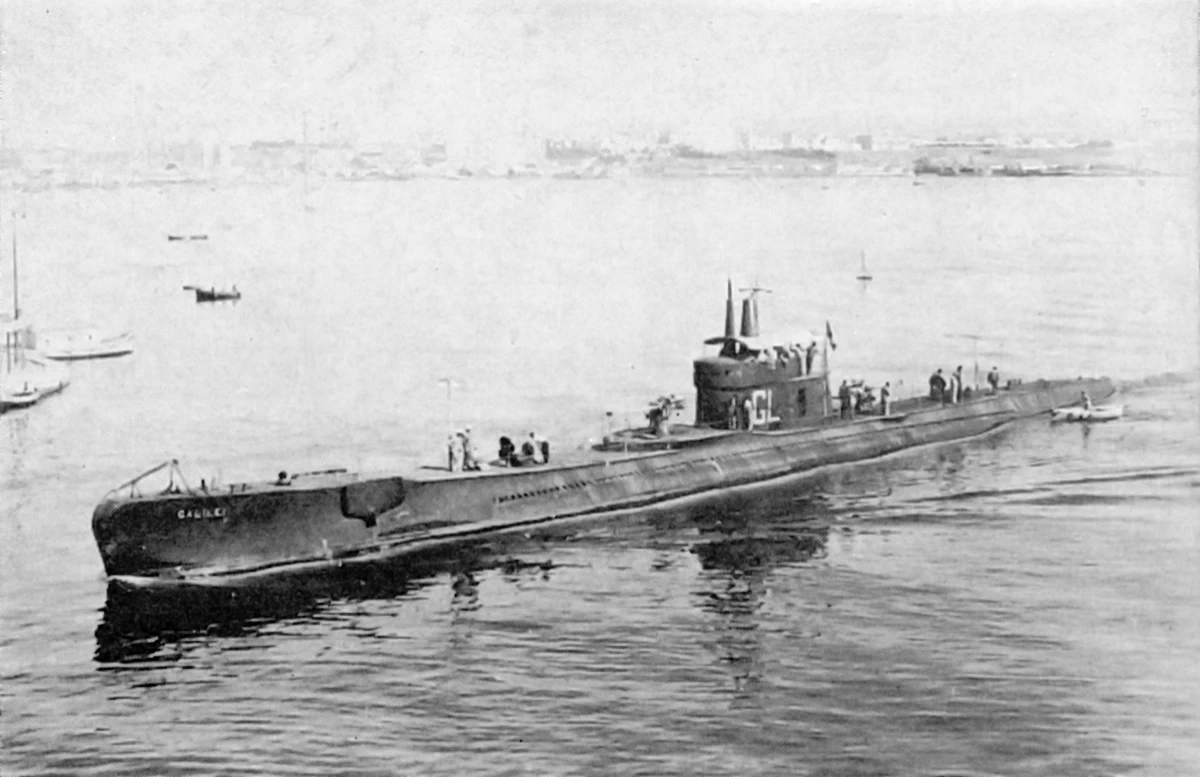Italian Submarine Galileo Galilei
Galileo Galilei was an Archimede-class submarine built for the Italian Regia Marina. Launched on 19 March 1934, she was commissioned on 16 October 1934. At the time of Italy’s entry into the Second World War, Galileo Galilei was in the Red Sea. On her first patrol, she sank the Norwegian tanker James Stove on 16 June 1940. On the afternoon of 18 June a Yugoslavian steamer Drava was spotted. Galileo Galilei fired a shot across her bows to force her to stop, but on seeing the flag of a neutral country allowed her to proceed. The gunshot however was heard by HMS Moonstone an anti-submarine warfare trawler patrolling nearby.
One British aircraft responded to Moonstone’s signal, arriving at 16:40 and which forced the submarine to dive. After nightfall, Galileo Galilei surfaced to recharge her batteries, but was spotted by Moonstone forcing her to dive again. Subjected to a depth charge attack which caused no damage, she waited out the night on the seabed. On the morning on 19 June, methylchloride poisoning began affecting the crew. At this time, she was detected by Moonstone which commenced a depth charge attack. Considering the weak armament of Moonstone (one 4-inch gun and two machine guns, Captain Nardi decided on a surface action with his two-100mm guns and machine guns.
HMS Moonstone moved too fast for the 100mm deck guns to accurately target her, compounded when the sighting mechanism of the forward gun broke. Hits on the forward gun position, conning tower (killing the captain) and then the jamming of the rear gun caused the senior officer to surrender the submarine when the British destroyer HMS Kandahar also arrived.
After her capture, Galileo Galilei was berthed at Port Said and served as a generating station to charge the batteries of British submarines. She was commissioned into the Royal Navy in June 1942 as HMS X2 (later changed to P 711), and was operated as a training boat in the East. She was scrapped on 1 January 1946.








